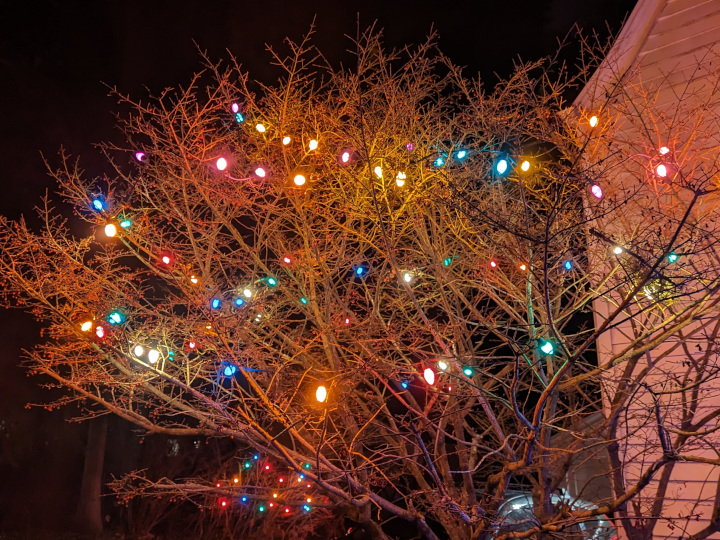Christmas lights are something I really look forward to this time of year. Ideally with snow, which lately seems scarce. But changing weather aside it still stays darker this time of year in the Northern Hemisphere, and the extra light looks nice.
One of the changes since I was younger is the proliferation of LED lighting. In a way, LEDs are kind of natural for Xmas lights. They’re small, and of course more efficient. That means less heat, and you can string more of them together. Not only that, but they don’t have a filament, and last much longer.
Of course, there are a couple issues with LEDs. They’re diodes, and they only conduct in one direction, which presents an issue when running on alternating current, which changing directions. Early LED light strings were just a series string of LEDs connected to the AC line, meaning they were off roughly half the time. This made for some interesting strobing effects, particularly if the string blows in the wind.
That issue can be worked around in a couple ways. If you run the LEDs on DC, you don’t have this issue. Higher-quality light strings no include a rectifier and filter capacitor, which helps a lot. You can still see maybe a little flicker if you shake the string hard enough, since some ripple will get through depending on how the filtering is done, but it’s not hard to mitigate this. Of course, small strings that run on batteries also don’t have this issue.
Another issue is the light quality itself. LEDs produce a fairly “pure” monochrome light, which is a little jarring. This gives them a fairly cold and mechanical look. Actually, if you just want to use a single color, this can kind of be an advantage. But if you put multicolor strings up, it’s not quite the same effect as the incandescents.
C7 Lights
The lights I was referring to above are the smaller strings, with series connections. Bigger lights, using the C7 or similar-size bulbs, are run in parallel. These have their own nice warm look, but they use a lot of power – the C7 size uses about 5 watts per bulb, while the C9 size uses 7 watts. For a 25-light string, that’s 125 watts with C7s, and 175 watts for the C9s.
There are LED alternatives. You can get lights which are basically the smaller LEDs with plastic lenses that are the size of the bigger lights, as well as ones with a fake filament that run on 120 VAC and replace the incandescent lights in the same string. I had an earlier string of these, and they look okay.
Then, I became aware of Tru-Tone lights. These are made using a warm white filament-shaped LED, inside a bulb made exactly like the old, conventional incandescents. In other words, frosted glass. Here are some pictures from one of my trees:


Overall, these lights look great. In fact, they’re almost indistinguishable from the incandescents they replace, or close to it. Each of them uses only about 0.6 watts, so a string of 25 uses about 15 watts.
I would recommend these. I have plenty of the normal mini-LED lights, and they look okay. I wish they were warmer in color, and maybe we’ll see similar mini lights to these someday. But I’m still happy with them for some festive illumination.
(I will confess that I still use incandescent Xmas lights indoors and in places where they’re just not on all the time.)